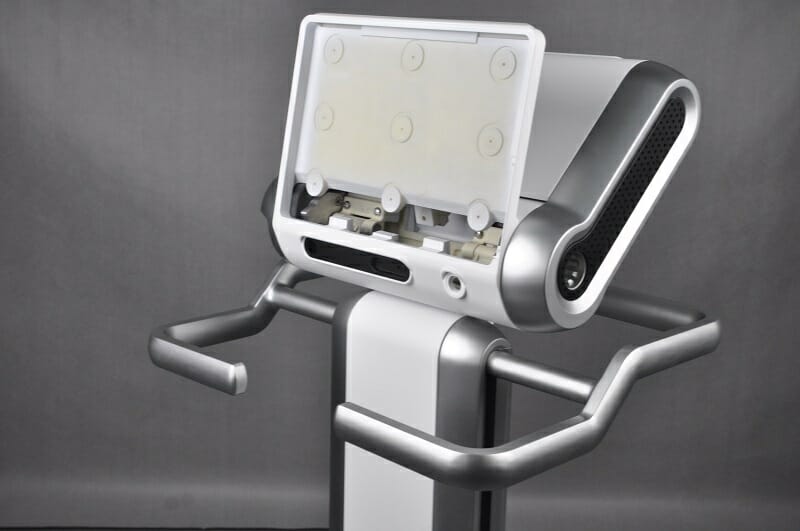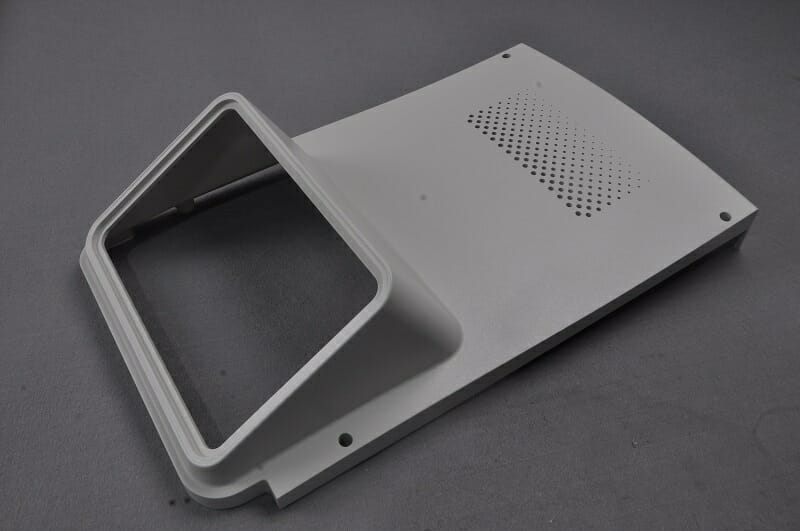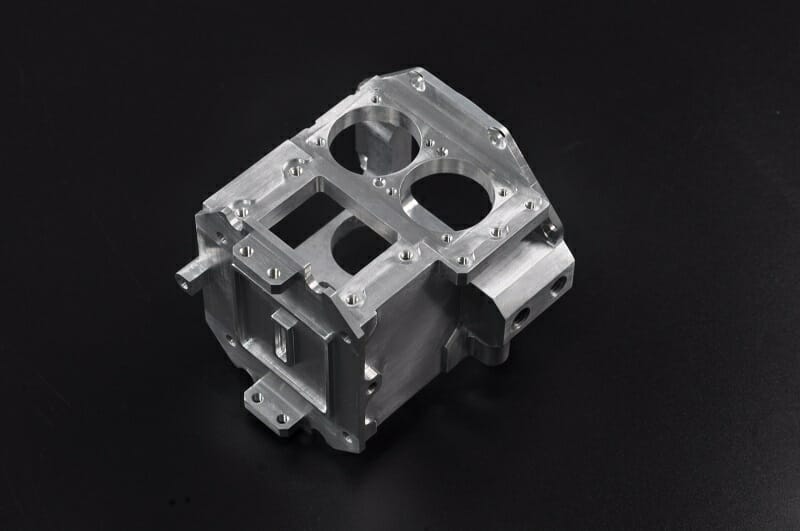Many medical products and devices are manufactured using medical-grade plastics, such as rapid parts for surgical equipment. Considering these products often interact with blood and other internal human tissues, these plastics must meet specific requirements before they can be certified for use in manufacturing medical gadgets.
Medical-grade plastics refer to plastic materials used to manufacture medical devices and products. These plastics are mainly thermoplastics, like polyethylene and polypropylene, used for various industrial applications. The FDA and other regulatory bodies have validated these thermoplastics as being biocompatible and suitable for manufacturing components used in the health sector.
Plastics are used in manufacturing simple products like syringes, catheters, surgical gloves, IV tubes, etc. However, they are suitable for fabricating components of more sophisticated gadgets like ECG machines, CT scanners, monitors, etc. These plastics are also used in manufacturing packaging for medicines and other pharmaceuticals, among other uses.
Is Medical Grade Plastic Safe?
Medical-grade plastics are safe for manufacturing medical devices and various components used in hospitals. The FDA and other reputable organizations have confirmed the safety of these plastics for medical gadgets, even for the production of implants.
Some of these specifications include the following:
- Biocompatibility
- High heat, abrasion and chemical resistance
- Anticorrosive properties
- Impermeability, etc.
That said, these plastics meet all these standards, hence, the name – medical grade plastics.
Generally, all medical products are designed to diagnose, prevent, and treat disease conditions. And since they are dealing with the health of humans, the materials must be capable of maintaining high precision and accuracy standards, including all the properties we mentioned earlier. Plastic polymers are compatible with many manufacturing techniques, including the creation of rapid parts, which makes them an excellent fit for designing components of medical devices.
In addition, their high resistance ensures that they are sterilizable using heat, or chemical sterilants, which ensures their purity when dealing with.
Advantages of Medical Grade Plastics
Besides the characteristics that make medical-grade plastics a valuable asset to the medical industry, let’s examine some of the benefits of these materials.
Cost Effectiveness
Fabricating medical devices with medical-grade plastic can cut costs. Besides their relatively lower production costs than other materials, they are easy to work with regardless of the manufacturing processes, especially rapid prototype tooling and injection molding.
In addition, they are durable, abrasion-resistant, and economical for large-volume production. In all, medical-grade plastics are excellent for reducing costs yet producing high-quality products and devices for the health sector. Moreover, thermoplastics are recyclable, ensuring that unused materials during the fabrication of one component can be easily remelted and utilized for another.
Easy to Sterilize
Many medical instruments need to be 100 percent pure and free of any microorganisms that may transmit diseases. Therefore, materials used in manufacturing these products should be easy to sterilize.
Since medical-grade plastics possess high resistance to heat, chemical and mechanical agents, sterilizing these components is straightforward. Also, because of their low cost, many plastic products like syringes and gloves are suitable for single-time usage.
High Versatility
Another significant benefit of utilizing medical-grade plastics is their high versatility. These polymers are suitable for fabricating components with complex structures, requiring strict design specifications. They are used in manufacturing simple medical products like tubes and syringes and more sophisticated ones like body implants.
Guaranteed Safety
Medical plastics are non-permeable, making them suitable for collecting and transporting biological substances, especially those hazardous to human health. Also, manufacturers design plastic containers to be abrasive and tamper-proof, ensuring that their content is not exposed. In fact, some plastics’ surfaces are treated with antibacterial agents to prevent contamination and even reduce the need for frequent sterilization.
Enhanced Quality of Life
Plastic polymers makes it easier to fabricate products that can help improve in treatment of patients. For example, prosthetics for amputees are easily manufactured and customized to suit each individual’s needs, thereby improving their overall quality of life. In addition, unlike other natural substances like latex, plastics are relatively unlikely to cause any allergic reactions.
Room for Further Innovations
We mentioned that medical-grade plastics are compatible with many manufacturing techniques. Therefore, with continual technological advancement, there’s always a possibility for more innovations with plastic products that may benefit the health sector.
Common Thermoplastics Used for Medical Device Injection Molding
The following thermoplastics are a mainstay in the medical industry and are used in injection molding various medical products and devices.
(1) Polyethylene
Polyethylene, also called polythene, is the most common plastic polymer and is the go-to material for injection molding medical gadgets. Polyethylene is the result of the linear combination of several units of ethylene monomers, either in low or high densities, depending on its use.
Below are some features that make it valuable as a medical-grade plastic.
- Biologically inert, making it suitable for prosthetics, as it won’t degrade in internal tissues.
- Shatter and corrosion resistance
- Retains structural integrity even after sterilization and exposure to other harsh conditions
Polyethylene is used to manufacture various tubes and connectors, bottles, pharmaceutical containers, surgical implants, etc.
(2) Polypropylene
Polypropylene is a white, chemically stable plastic polymer arising from the combination of various chains of propylene monomers. As a medical-grade plastic, polypropylene is chemically and mechanically inert to stress, cracking and abrasion. This thermoplastic has an extremely high melting point, which makes it suitable for fabricating components that require heat sterilization.
Polypropylene is used to manufacture disposable components in hospitals, like respirators, joint prostheses, prescription bottles, syringes, etc.
(3) Polyvinyl Chloride (PVC)
PVC is another widely used thermoplastics, especially in construction industries. However, it is also a common material for the fabrication of medical devices and products. It’s a white solid produced either as a rigid (unplasticized) or flexible polymer.
The flexible PVC is often used as a substitute for rubber in various applications, especially those requiring 100 percent sterility. The rigid PVC is durable with high tensile strength. The combo of these features makes them valuable to the medical industry. PVC is used to manufacture flexible and disposable materials like tubes, catheters, oxygen masks, infusion sets, etc.
(4) Polyamides
Polyamides are another common thermoplastics; you will know them as nylons – a synthetic polymer. Its incredible strength and rigidity make it a substitute for weaker metals in various applications. It is compatible with injection molding, rapid prototyping, 3D printing, machining and other technologies used in creating medical devices.
Because of its main features, it is resistant to chemicals, stress and wear and tear conditions. Compared to other thermoplastics, it is relatively expensive but suitable for creating prosthetics, bone replacements, dentures, catheters, etc.
(5) Acrylonitrile Butadiene Styrene (ABS)
ABS is a polymer consisting of acrylonitrile and styrene in the presence of polybutadiene. The proportion of each may depend on their applications. Characteristics of ABS, such as chemical, stress and abrasion resistance, high rigidity and strength, and anti-corrosive properties, make it an excellent medical-grade plastic.
It is amorphous with no specific melting point but has high heat resistance. 3D printing is the go-to manufacturing technique for working with ABS. However, it is also compatible with injection molding, extrusion, and other manufacturing technologies. It is used in manufacturing tendon prostheses, sutures, tracheal tubes, etc.
(6) Polycarbonate
Polycarbonate is lightweight but has high strength and rigidity making it suitable for making medical equipment. It is transparent like glass but has up to four times more tensile strength yet maintains high flexibility.
Besides, it has high chemical, heat and impact resistance. Polycarbonate is suitable for injection molding and other technologies used in fabricating medical instruments. It is used in manufacturing blood bags and oxygenators, protective gear, masks, connectors, etc.
Conclusion
The main criterion for considering a thermoplastic polymer as medical grade is its compatibility with biological tissues. Their resistance to harsh conditions is another reason, as hospital equipment may be subjected to extreme conditions like sterilization. Therefore, plastics and materials for creating medical products must be safe.





